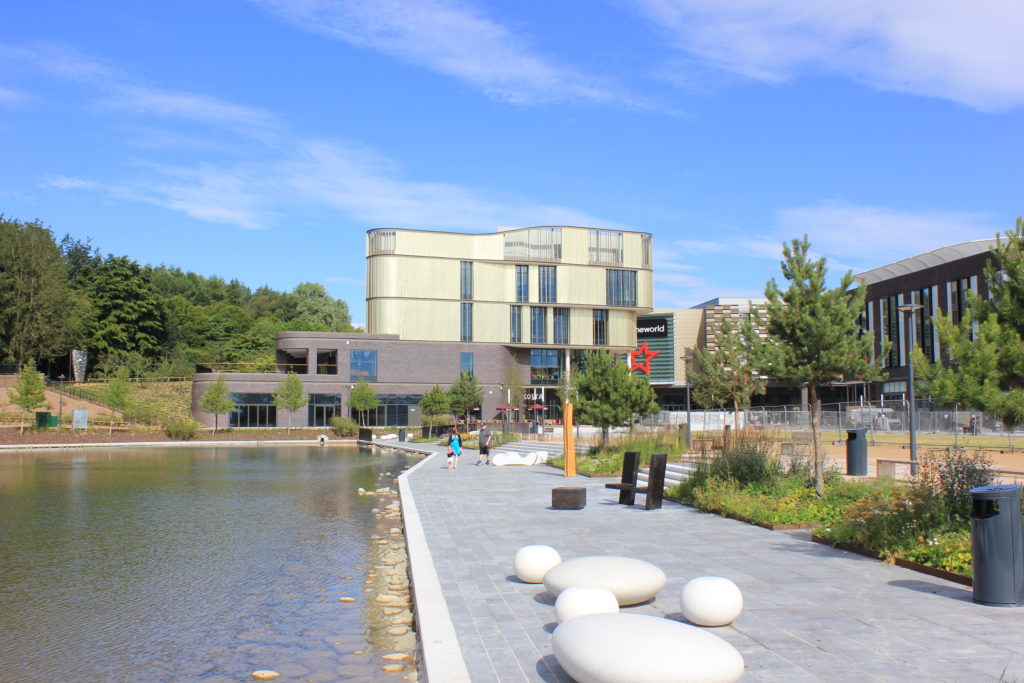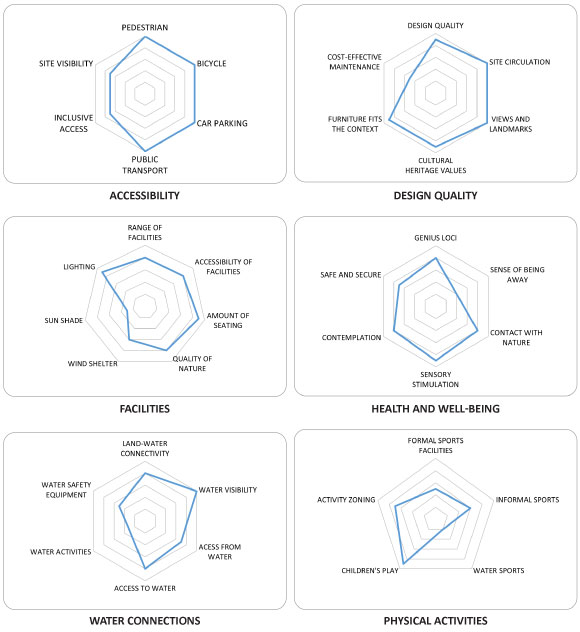
Architect
Gillespies Associated Architects, Curtins, Hoare Lea
Type of Area
Pond
Land/water interaction
Riprap
Promenade
Built Environment Types
Moderately Built with Moderate Green
Scale of Impact
Block
City
Intervention Scale (Spatial)
Moderate Site
Project Types
Economic Regeneration
Public Green Space Regeneration
Outdoor Recreation
Urban/ Rural
Urban Core
Visibility and Openness
Fully Enclosed
Fully Contained View
Reviving an Urban Legacy
The Telford town centre design dates back to the 1960s and results from the UK’s post-World War II new town development strategy aiming to rehabilitate the regional areas facing urban migration. Telford was designed as a forest city with many species of trees and a leafy town park providing a green lung at the centre of the town. However, this design did not fit into the 21st century’s economic and social standards, requiring a need for inward investment to revive its economic and social prosperity.
Telford and Wrekin Council along with the Mace Group took the initiative as developers to reshape the town, introducing a new (development) masterplan centred around Southwater One; a modernist mucky-white-clad building that incorporates a variety of entertainment, cultural, and social facilities.
The development was extended beyond the building itself, encompassing a new urban square, a large lake and an urban beach that was planned to be an area for interactive play and space for various events.
The design of the beach allows a margin of flexibility for creative and informal usage of the area, including enjoyable walks by the lakeside. The riprap (stone edging) and planting on the margins encourage informal use and invite people to get close to the water. A variety of spaces for playing games and seating has been included. The seating includes regular benches and large pebble-like structures close to the lake edge providing connectivity to the water. Play areas for children and adults also include chess and boule facilities.
To promote the wildlife in the project’s area, native plants are integrated into the site enriching the landscape and creating various ecosystems during the different seasons and times of the day. The different species are integrally harmonised with other landscape elements.
The urban square, located at the heart of the Southwater development, was established as a transitional space between the existing Town Centre and the new lake, serving as the main entrance to and from the Town Park. It connects the park to the town centre which also reflects the city’s industrial heritage.
The lake’s shore thus features artefacts and art installations scattered around, bringing an artistic aspect to the waterfront. In general, this £250-million development project, which is a result of a public-private partnership significantly contributed to the social and economic well-being of stakeholders, the local community, site users, and the city itself.
Perception and Meaning
Imageability
Sense of Place
Place Identity
Accessibility
Place Attachment
Health and Wellbeing
Place Affordance
Aesthetic Experience
Better Environmental Perception
Increases socialisation
Restorativeness
Interaction with Water
Visual
Tactile – partially in water

Despite that the waterfront of the lake is not fenced, it is considered to be relatively safe due to the shallow shores of the lake. While stairs and ramps secure entry to the low level of the lakeshore making it accessible for walkers and wheelchair users, concerns about safety persist, particularly for the last group of users. Therefore it scores highly on accessibility but lower on safety.
With large areas for car parking available for the different facilities within the site’s location, as well as a bus station in the Telford Town Center, the urban square and the lake are highly accessible for all users and therefore score highly for accessibility. Cyclists are also welcome to the site with a network of cycle-friendly pathways that go around the lake, complementing the motorised accessibility of the site.
Materials used in the landscaping reflect the towns industrial past. For example, cor-ten steel has been used to provide stable rust-like finishes to metal constructions. This steel does not require painting, retaining its patina without deterioration. It therefore scores highly for cultural heritage features.
The riprap edging means that accessibility to water is also high, but there is a lack of activities on the water and therefore scores are understandably low for this.
